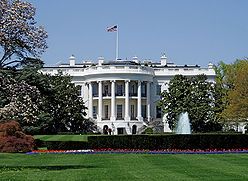This week the Supreme Court heard arguments for the ending of limits on campaign contributions for individuals, McCutcheon v. Federal Election Commission. The argument for lifting the limits is the same that were used to argue Citizens United that opened the flood gates of money from corporations, money is free speech.
Next Citizens United? McCutcheon Supreme Court Case Targets Campaign Contribution Limits
by Paul Blumenthal, Huffington Post
Alabama electrical engineer and budding political donor Shaun McCutcheon broached a problem in conversation with conservative election lawyer Dan Backer, who one day earlier had led a CPAC panel on rolling back campaign finance laws in which he predicted that campaign contribution limits would soon rise.
McCutcheon had recently learned there were overall federal campaign contribution limits on what a single donor could give during a two-year election cycle. He voiced his annoyance to Backer and wondered if he could just ignore the aggregate limits — something that a few dozen donors wound up doing], whether deliberately or inadvertently, in the 2012 election. [..]
A little more than a year later, McCutcheon, now joined by the Republican National Committee, is bringing the biggest campaign finance case before the Supreme Court since the controversial 2010 Citizens United decision. If the justices rule in their next term to toss the overall limits, it would mark the first time the Supreme Court had found a federal contribution limit unconstitutional and would open the door for even more money to flood the political system.
It would also be a major victory for counter-reformers, who have racked up a string of wins rolling back campaign finance regulation ever since Justice Samuel Alito replaced the more campaign regs-friendly Sandra Day O’Connor. And it would be a major blow to the campaign finance regime crafted in the 1970s following a string of corruption scandals culminating in the abuses revealed in the Watergate investigation.
One other small point, McCutcheon is a climate denier.
This week’s guest on Moyers & Company, Yale Law School election and constitutional law professor Heather Gerken discussed the how a ruling in favor of McCutcheon will further erode campaign finance regulations and allow more cash and influence to slosh around in the system.
McCutcheon challenges aggregate caps on how much individual donors can give to candidates and political parties. The current overall cap stands at $123,200 per donor for a two-year election cycle, but McCutcheon could raise that amount to more than $3.5 million.
Gerken says if the court rules in favor of McCutcheon, one donor could write a check that might cover a politician’s entire election campaign. “We’re going to start to worry about the bad old days when politicians were beholden to an incredibly small group of wealthy donors … Right now when politicians want to raise money they have to talk to at least middle class voters. They have to talk to a pretty big number of voters to raise money for their campaigns.”
Gerken fears that a small, rich group would not only influence the outcome of elections, but policy decisions as well. “It’s not just a seat at the table on election day, it’s a seat at the table for the next four-to-six years when they’re governing,” Gerken says. “Wall Street is going to be controlling the congressional agenda, Main Street is not.”
Transcript can be read here
As suggested by Karin Kamp, at Moyers’ & Company web site, here is a list of recommended articles that explain the case.
Chief Justice Roberts: A Campaign Finance Moderate Who Gets It?
by Rick Hasen, Election Law Blog
Poor Little Rich Guys
by Dahlia Lithwick, Slate
Conservative Justices Signal Dismantling Of Campaign Donation Limits
by Sahil Kapur, TPM
Mitch McConnell’s Moneyocracy
by Katrina vanden Heuvel, The Washington Post
Meet Shaun McCutcheon
by Ben Jacobs, The Daily Beast
There is also a very informative video from the Washington Post that is worth watching.



Recent Comments